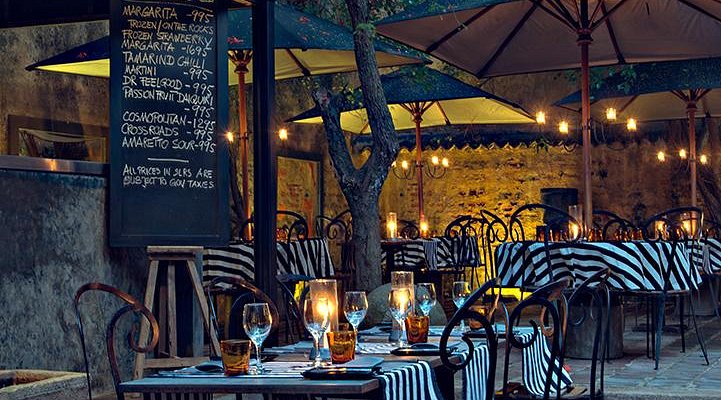Ritigala is a monastery swathed in legends and myths. It's highly atmospheric, with each carefully laid out granite step and stone telling stories of bygone days when ascetics and monks sought the forest's refuge for meditative retreats.
As Legend Goes…
We have a rich history of yakshas, spells, and other magical happenings. This monastery isn't special just becuase it is (or was) a monastery. It's also renowned for its unique vegetation: there are herbal plants found within its premises that aren't to be found anywhere else in the country, yet are found in certain parts of India (or so folklore says). It's also the highest point in the North-central region, and ergo is a lot cooler than its surrounding areas. I've read of it being referred to as a micro-climate, where you get climes similar to those of forests in wetzones as you ascend higher into the peaks. For the record, the mountains are off range for people and you can't climb it without obtaining prior permission.
The story behind its distinctive avifauna is interesting, to say the least. As legend goes, the god Hanuman was passing by in leaps and bounds, on an errand for Rama. Rama's brother was dying, and a potion concocted of the extract of three herbs from the Himalayas was necessary to save his life. Hanuman flew across Sri Lanka and India, and searched frantically for the herbs — but alas, couldn't identify them and was worrying about getting too late. In the end, he decided to do the wise thing and basically uprooted the mountain itself, bringing the whole thing back to where Rama and his brother was in Sri Lanka so they (or the doctors, basically) could pick the specific plants they needed.
He was flying across Ritigala, when a part of the landmass he was cradling dropped: along with its characteristic plants and herbs… and lo and behold, that grew into the forest it is now, containing medicinal herbs found nowhere else in Sri Lanka.
Stories date back to the third century, and speak of a warrior who fought during the reign of King Pandukabhaya. Ritigala Jayasena, who was killed on the battlefield. His ghost is what's said to haunt the monastery even to this day.
Another also speaks of a persona called Jayasena, from the village of Ritigala (this was during King Dutugemunu's era, by the way). Jayasena died tragically (and dramatically) following a duel with Gotaimbara — the latter's hit was so powerful that Jayasena's head was separated from his body and never found again. There are tons of different stories, but the gist of it is that a bear's head was re-attached to Jayasena's body, and this came to life and in turn became the feared demon Maha Sona.
Anyway. The Forest.
You have to pay a nominal entrance fee (I think it's Rs. 20 or something like that?) to get in, and the guard at the entryway will tell you to follow the path and not venture into the forest as the rest of it is off limits.
Yes, it's the forbidden forest, and is home to a number of endemic creatures, including the sloth bear and four species of wild cats. We're not sure about whether it also has monstrous spiders akin to the Acramantula, but they do have these giant, colourful centipedes (pictured above).
It's also crawling with these stunning, copper and gold skinned salamaders. You find them in abundance, skittling across all surfaces indiscriminately.
Walking along, you find signboards without descriptions: this was a pond, this was where an ayurvedic hospital stood, these are the pavements (the only thing that's properly intact to this day).
You're bound to be awed by the symmetry and perfection of the ruins, especially as you wonder how in the world people transported such heavy slabs of granite and stone uphill, and how they carved and seamlessly moulded rock to such smooth structures.
Fin
It'll take you about one and a half hours at most to traverse through the given path: but keep an eye out for little side paths which would lead you to the hospices, fancy rock urinals (yes) and lots more wildlife. Go really early, you'll miss the busloads of school kids and tourists, and you'll be able to spend a few wonderful minutes lying flat on the remnants of the last building at the end of the path, and staring at the sky and canopy of trees.
Beyond that is a No Entry sign, which leads to the mountains. Try getting a permit to climb that mountain, I've heard it's pretty great. It's also got close to a 100 caves.
Fun Fact: It's literally officially called 'Ritigala Strict Natural Reserve.'















